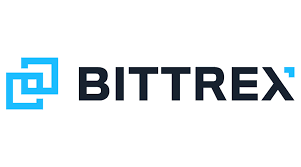Hashing algorithms serve a substantial part in guaranteeing the confidentiality of information in the field of telecommunications. Among the various hash algorithms accessible KMAC has received a lot of scrutiny due to its unique properties and uses. In this post, we’ll go over every detail there is to learn regarding the KMAC hash operation, from its technical details and features to its real-world implementations and benefits.

Understanding the basics of the KMAC hash function
The KMAC hash function is a cryptographic algorithm that takes an input message of arbitrary length and produces a fixed-size compression value. It is based on the sponge construction, which allows it to process messages of any size efficiently.
Properties
KMAC exhibits several desirable properties that make it suitable for various cryptographic applications. These properties include preimage resistance, second preimage resistance, and collision resistance. Preimage resistance ensures that it is computationally infeasible to determine the input message from its compression value. Second preimage resistance guarantees that given an input message, it is practically impossible to find a different message that produces the same hash value. Collision resistance ensures that it is highly unlikely to find two different input messages that generate the same compression value.
The construction of the KMAC hash function
KMAC is based on the Keccak sponge construction, which is a versatile cryptographic primitive. The Keccak sponge construction consists of two main phases: the absorbing phase and the squeezing phase. The input data is analyzed block by the block during the absorption phase, and the resultant compression value is created during the squeezing phase.
KMAC’s ability to function in keyed mode is one of its most notable qualities. This signifies that the computation includes a secret key in alongside the supplied message. The introduction of a secret key improves the hash function’s security, making it resistant to different assaults such as pre-computation hacks.
Practical applications of the KMAC hash function
The following sections explain the practical applications of the hashing algorithm.
Message authentication codes (MACs)
KMAC is frequently used in the development of secure message authentication codes (MACs). A MAC is a cryptographic mechanism that allows the message’s receiver to validate its legitimacy and integrity. MACs can give strong security assurances by employing KMAC as the underlying hash function, assuring that the message was not tampered with during transmission.
Key derivation functions (KDFs)
KMAC can also be utilized in key derivation functions (KDFs), which are essential in the generation of cryptographic keys from a given source of entropy. KDFs based on KMAC can produce high-quality keys that exhibit desirable properties such as unpredictability and uniformity.
Password hashing
Password hashing is a critical component of secure authentication systems. KMAC may be used in password algorithmic hashing to prevent user credentials from being kept in plaintext. When KMAC is applied to a user’s password, an encrypted compression value is obtained that may be saved in a database. The user’s input password is encrypted using KMAC during authentication, and the resultant hash value is compared to the stored value, providing for safe and quick verification.
Advantages of KMAC hash function
The following are the top advantages of the KMAC network.
Efficiency
KMAC is known for its efficiency in processing messages of any size. Its sponge construction allows for fast and parallelizable computations, making it suitable for applications that require high-performance hashing.
Security
KMAC provides a high level of security due to its resistance against various attacks, including preimage attacks, second preimage attacks, and collision attacks. The inclusion of a secret key in its keyed mode further enhances its security properties.
Versatility
The ability of KMAC to work in both keyed and unkeyed modes makes it a versatile hash function. Its applications extend beyond basic hashing, allowing for the construction of MACs, KDFs, and password hashing algorithms.
Conclusion
Finally, the KMAC hash function is a strong cryptographic method with a variety of beneficial characteristics and applications. Its sponge architecture, along with the ability to operate in a keyed mode, makes it an adaptable alternative for a variety of cryptographic applications. KMAC provides efficient and safe solutions in message authentication codes, key derivation functions, and password hashing. As technology advances, the significance of robust hash functions such as KMAC cannot be emphasized, since they play a critical role in guaranteeing data integrity and security in an increasingly digital environment.
You can also find these articles helpful
History of Zcash
6 Popular Cryptocurrency Mining Algorithms You Should Know
Everything You Need to Know About HAS-160 Hash Function











